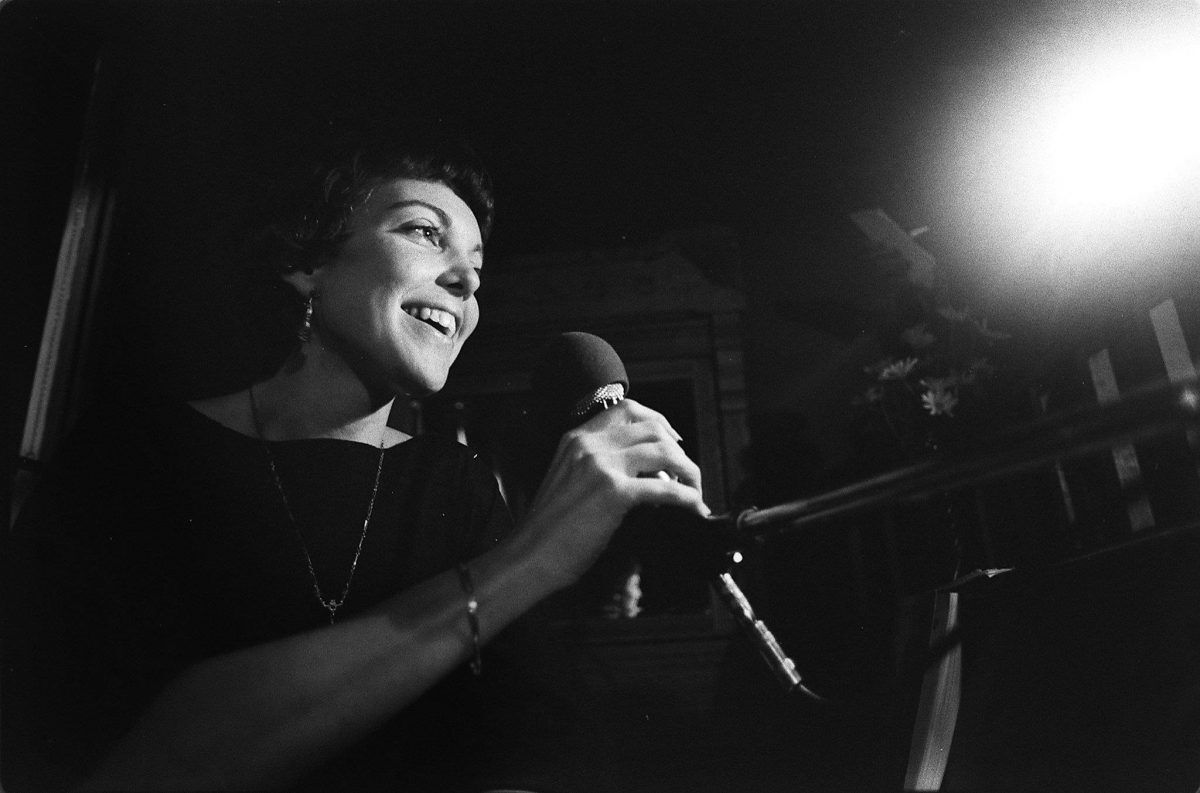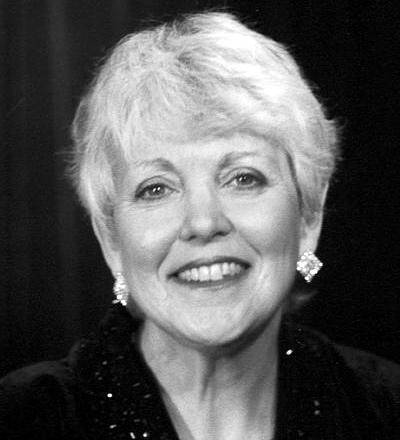I was introduced to song stylist Wesla Whitfield at one of her numerous appearances at the Plush Room, a popular San Francisco cabaret, and immediately joined her legion of admirers who recognized her as one of the most gifted interpreters of the Great American Songbook. I was privileged to see and hear her perform with husband-pianist Mike Greensill at various venues around the country over the ensuing years and to interview her at the 2014 Cleveland Classic Jazz Party. The following is an edited version of that story.
Because of her deft rhythmic sense and uncanny ability to connect with the emotional truth of a lyric, the jazz world had no qualms about embracing Wesla Whitfield as one of their own. Her approach was intimate; her voice instantly recognizable. She often gave master classes on vocal performance with emphasis on lyric interpretation.
A review of one of her concerts reinforced why Wesla was a favorite of thousands of fans who heard her in person or listened to one of her many recordings. Under the headline, “This Voice Needs No Adornment,” the reviewer wrote, “Among the evils American Idol has unleashed on the world is the notion that to sing a song, one must perform vocal gymnastics in such a frenzied manner that the actual song becomes all but unrecognizable, not to mention eviscerated of all meaning, soul and heart.”
“Wesla Whitfield doesn’t do that. She doesn’t need to resort to vocal tricks because she has a real voice. She understands that good singing is also good storytelling. Each song is a little novel, something rich with meaning and emotion, and she brings us effortlessly into the experience of the song.”
She agreed with the iconic pianist Teddy Wilson, who when asked about his approach to improvisation, said he felt it important to obtain a copy of the original composition so he would know exactly what the composer wanted the tune to sound like as well as the chords he had chosen to get the desired results. Once learning the original, Teddy would adapt to his style, but admitted he generally played the song pretty much as written, feeling there was little he could do to improve the original.
Always a Singer
A native Californian and the youngest of three girls, Weslia Edwards (with the added “i” in her given name) acknowledged she knew at the age of two-and-a-half that she would grow up to be a singer. She earned a degree in music from San Francisco State University, and her first job was as a salaried chorister with the San Francisco Opera. She performed at various San Francisco cabarets along the way and also worked as a singing waitress at a restaurant in nearby Burlingame.
 On April 12, 1977 following a rehearsal, she was walking back to her car when she was hit in the back by a random .22-caliber bullet that left her paralyzed from the waist down. Two years of arduous physical therapy followed, but in less than three months and confined to a wheelchair, she was back on stage. “There was no way I wasn’t going to sing,” she recalled. “In the midst of being depressed, I knew I would figure out how to do things. I just went on doing what I had been doing before the accident.”
On April 12, 1977 following a rehearsal, she was walking back to her car when she was hit in the back by a random .22-caliber bullet that left her paralyzed from the waist down. Two years of arduous physical therapy followed, but in less than three months and confined to a wheelchair, she was back on stage. “There was no way I wasn’t going to sing,” she recalled. “In the midst of being depressed, I knew I would figure out how to do things. I just went on doing what I had been doing before the accident.”
As she fought to regain her health, she worked as a paralegal and computer programmer while rebuilding her singing career. By 1987, she was successful enough to concentrate solely on singing and for a time, opened for Michael Feinstein on his national tours. After teaming up with Mike Greensill, a typical response to their joint appearances was “Every number was framed in a smart arrangement and given its own particular shape, weight and feeling. Wesla knows how to ‘talk’ a lyric and personalize the story it tells with subtle dramatic and comic touches. In spite of her physical limitations, she delivers a song in an expressive and animated fashion. In short, she is a lyricist’s best friend.”
Played the Best Rooms
She played all the major jazz rooms and concert halls like New York’s Algonquin Oak Room and Carnegie Hall and San Francisco’s Plush Room, where she appeared for 26 years—even the White House—and garnered numerous national television, radio and media credits. She cited Karrin Allyson, whom The New York Times called “a singer with a feline touch and impeccable intonation,” as her greatest musical influence. “Karrin is brilliant and takes what I do and elevates it two or three notches,” Wesla responded with her usual modesty.
Rosemary Clooney was her favorite singer, Rogers and Hart her favorite songwriters, and “Looking at You” was her favorite song. She religiously practiced a good 20 hours a week, which followed the advice she would give an aspiring singer: “Practice, practice, practice—and work as much as you can. The key to being a great singer is to refine and nurture a style that doesn’t interfere with the song. That’s what I try to do. Always do music tastefully.”
When Wesla received SFSU’s Alumna of the Year Award in 2001, the citation noted, “Wesla Whitfield’s story is one of amazing talent, dedication, perseverance and strength. The career that she has built is an inspiration to us all.”
Lew Shaw started writing about music as the publicist for the famous Berkshire Music Barn in the 1960s. He joined the West Coast Rag in 1989 and has been a guiding light to this paper through the two name changes since then as we grew to become The Syncopated Times. 47 of his profiles of today's top musicians are collected in Jazz Beat: Notes on Classic Jazz.Volume two, Jazz Beat Encore: More Notes on Classic Jazz contains 43 more! Lew taps his extensive network of connections and friends throughout the traditional jazz world to bring us his Jazz Jottings column every month.





















